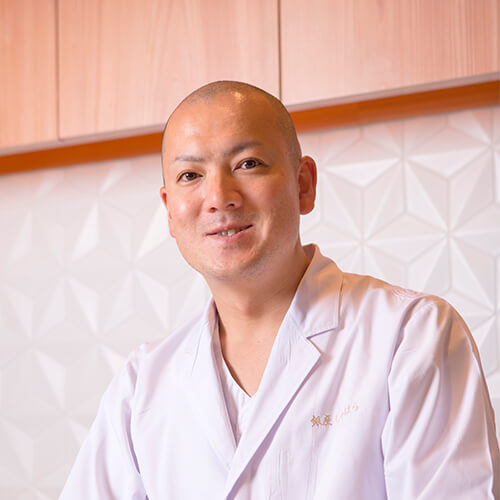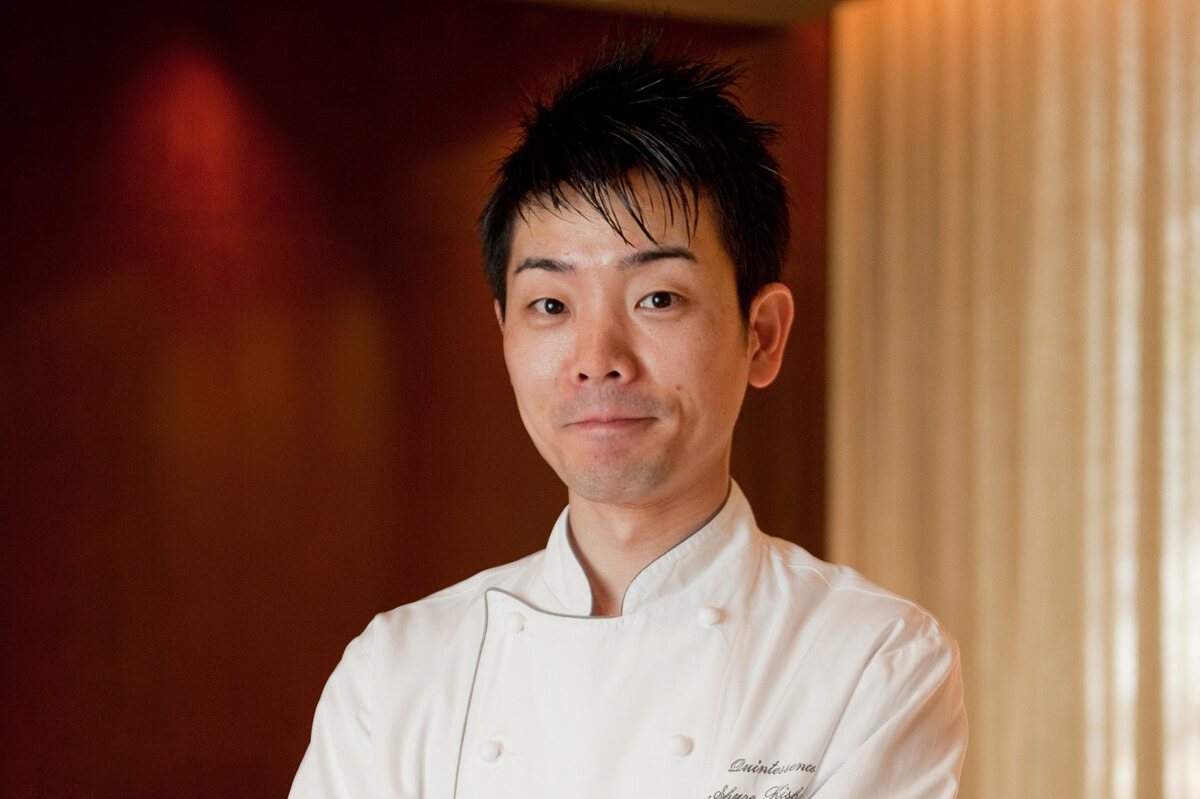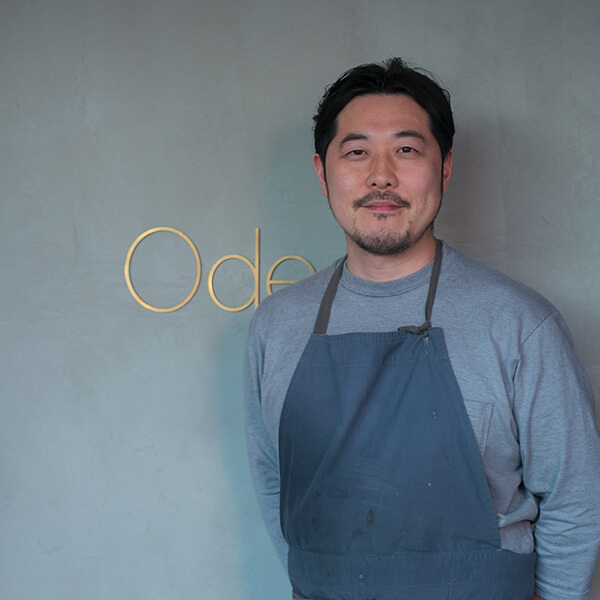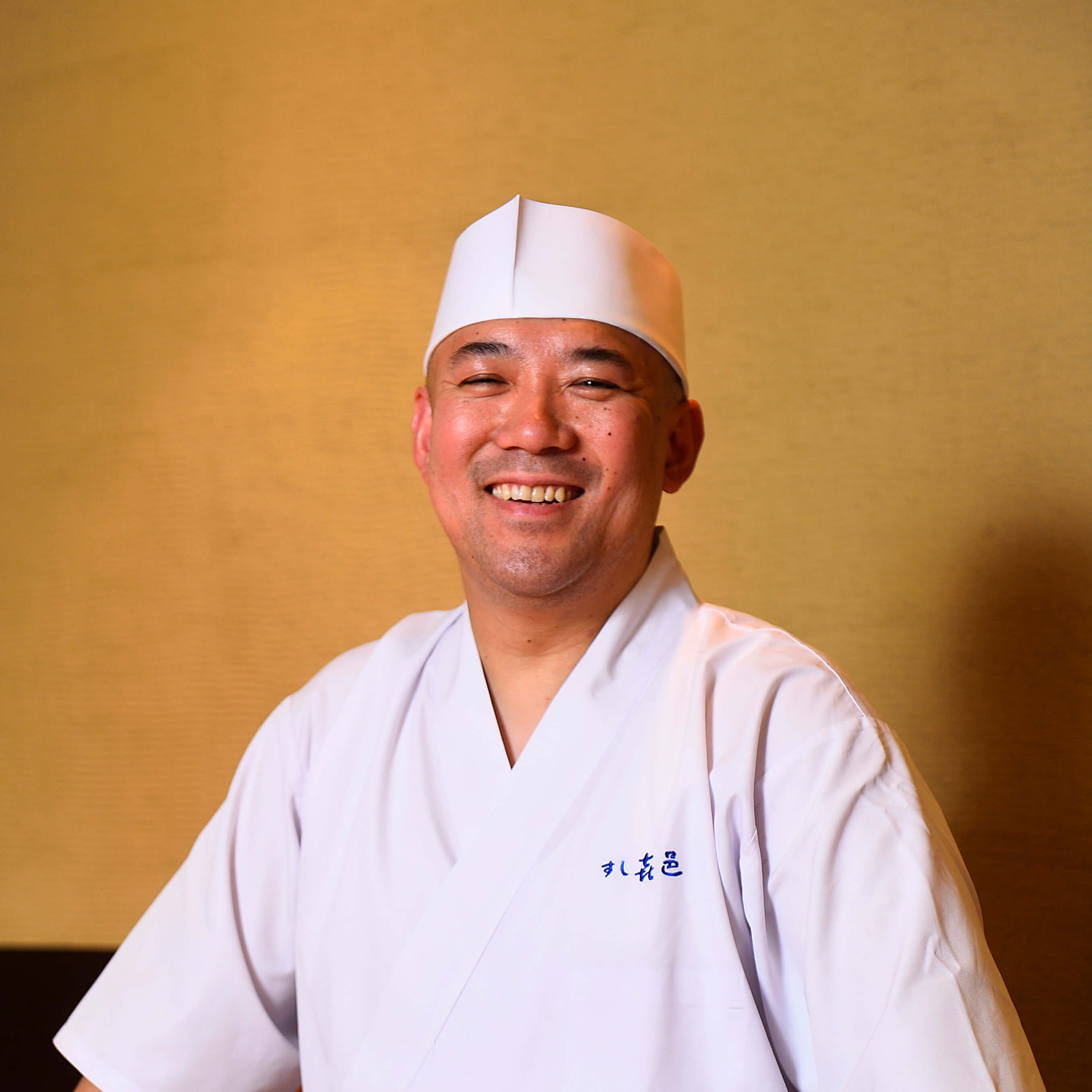Entering the Culinary World Out of a Random Idea
![[Assorted Seven Treasures]](https://savorjapan.com/assets/frontend/img/special/life-in-the-kitchen/02/4.jpg?v=51b2e3e1a21eed0cf52e31a67857e334)
––Was becoming a chef your childhood dream?
Mr. Shinohara: Apparently in my childhood days, I used to tell my parents how I wanted to become a chef. However, in my senior year of high school—the period of deciding my career paths—I never foresaw my future as a chef, not in the least. During my school years, I devoted my time to karate. I even obtained referral to college with it; but karate hurts, right? (chuckles) It does! I did not want to encounter such struggles after matriculating at college. That is why I spontaneously told my teacher, “I want to become a craftsman.” When the word “craftsman” slipped out, what came to my mind was my father who is an owner and a chef of Izakya (Japanese tavern). That is why I answered ‘chef’ when my teacher asked “What kind of craftsman?” Since I felt the need to adhere to my words, I entered the culinary world.
––Where did you start training after your decision?
Mr. Shinohara: First, I was introduced to [Yugyoan Tankumakitaten] by my father. There, I learned the fundamentals of cooking while attending school, which I am very grateful for. However, I quitted in a year, all because of the shocking encounter with the delicacies at [Sakurada] in Kyoto. Its subtle and decorative quality was enough to convince me. Immediately, I expressed my will to be employed at [Sakurada], but was rejected as the restaurant was not hiring at the moment. As I reckoned I might have a chance, I contacted a restaurant where the owner of [Sakurada] trained in.
Quitting the Desired Restaurant in Two Years
––You have a surprising energy. Were you hired at the restaurant?
Mr. Shinohara: Fortunately, yes. In two years, I was given a position of supporting mukoita (a high-positioned chef who prepares sashimi). However, with a youthful indiscretion, I left the restaurant shortly after. I would like to apologize deeply to my seniors during those days. Audaciously, I often claimed, “I will open a restaurant overseas in 10 years.”

––After quitting, what brought you to the next restaurant?
Mr. Shinohara: While I was unemployed—lost on what to do next—my father bumped into the master chef of [Sangencha (now located in Kyoto)] at the market. My father told him, “My son is unemployed with no plans for the future.” The master chef with his generosity, told my father, “Why don’t your son work at my place?” That is how I found my next restaurant where I worked until 26 years old. The experiences here made me who I am today. The owner’s motto was to satisfy the customers thoroughly. For instance, given that the seats were open, he would accept customers with no reservation. Not only that, if the second-time visitors appeared, he abruptly changed the preparation. The kitchen was always crazy like a battlefield. Although busy, I was inspired by his attentive style of serving the guests. Moreover, he taught me how to choose the right plate. He advised me, “Don’t lean towards your preferences. Balance is what’s most important.” Even now, when I select a plate, I follow his teachings.
![Another beauty of [Ginza Shinohara]](https://savorjapan.com/assets/frontend/img/special/life-in-the-kitchen/02/6.jpg?v=51b2e3e1a21eed0cf52e31a67857e334)
Opportunities Appearing in the Span of a Decade
––You established a restaurant of your own at your hometown when you were 27 years old. That
is impressive.
Did you initially have a clear image of your restaurant?
Mr. Shinohara: There is nothing to be impressed about. My father bought the land and property without asking my permission, and told me to return home. At that time, I was the head chef at [Sangencha] and anticipated a bright future ahead of me. Honestly, I was shocked. However, as I was fortuitously obtaining a restaurant of my own so sudden, I was determined to do kaiseki cuisine with course-only from the start.
––Were there any restaurants serving kaiseki cuisine other than yours in that area?
Mr. Shinohara: Not at all. It caused a lot of bewilderment when the customers started appearing. For example, as kaiseki is a course cuisine, I offered the dishes one by one. To my surprise, they did not even start on it. When I encouraged them to start eating, their reply would be, “I will wait for the rest of the dishes to come.” Slightly dispirited, I recognized the challenges ahead of me—to teach locals about the kaiseki cuisine from scratch. To please the locals, I prepared rare and exquisite ingredients, and made the course simpler—appetizer, meat and fish dish.
![Advancing to Tokyo, [Shinohara]](https://savorjapan.com/assets/frontend/img/special/life-in-the-kitchen/02/7.jpg?v=51b2e3e1a21eed0cf52e31a67857e334)
––Given your circumstances, your restaurant became popular nationwide and finally advanced to Tokyo! How did that occur?
Mr. Shinohara: My hometown, Konan City in Shiga Prefecture, was where subsidiaries would gather. Thus, my restaurant was used for business gatherings. Three years since its opening, customers outside of the prefecture started to appear. Online reviews contributed greatly, and many reservations came in. Nine years had passed, I had customers from all over Japan, and I wanted to take a next step. Just when I was contemplating about the difficulties in terms of the location, I was told about a property in Tokyo from the customer. Although seeking for a new location, it did not have to be Tokyo. However, viewing the property, my decision was instant. In retrospect, my path has been a miraculous one—owning a restaurant after 10 years of training and after the same year in Shiga, my next step was to place a foot on Tokyo.
The Intrinsic Quality of Rural Cuisine
––Have you changed your culinary style at the different location?
Mr. Shinohara: The style of the restaurant changed from the tatami seat to the counter seat. Thus, I started to pay closer attention to providing pleasure outside of cooking. For instance, if there is a somber atmosphere, I would try to lighten up the mood. Regarding my courses, I made a minor change on how it is composed. At Shiga, I used gibier and local ingredients in order to attract customers. However, this is Ginza, Tokyo—the most sophisticated town in Japan. As a lot of gourmets gather, I composed courses that will satisfy even them. However, my dishes are "rural cuisine,” after all. Kaiseki cuisine may be categorized in three: "Cho-shu (Townspeople) Cuisine," "Buddhist Cuisine," and "Cha-Kaiseki (Tea Ceremony kaiseki)." Fundamentals of my cooking belong to the " Cho-shu (Townspeople) Cuisine."

––The term “rural cuisine” does not link to your beautifully arranged dishes.
Mr. Shinohara: They are indeed rural cuisine, because I feel that dishes are naturally intertwined with your past experiences. Since childhood, I grew up with dishes such as steamed eggplant and grilled river fish, cooked by my mother and grandmother. Even figs and boars appeared on our dining table. Such experiences emerge subconsciously. I am accustomed to employing ingredients with every freedom from the start, so I will use foie gras, caviar, or truffle—anything. Even if the ingredients are not for Japanese cuisine, you make them one—that is the culinary skills and techniques of the chefs. Nothing really matters, as long as the dishes appease the customers. I have no stubbornness over the kind of dishes I create. On the other hand, I cannot duplicate dishes created by others. What I can only do, is to shape my expression into the dishes. I might be extraordinary in that sense. For instance, when I create “hassun (seasonal plate),” I plate the ingredients with the country Shiga sceneries on my mind. Because the dishes created are through my inner experiences, mine should be categorized as “Shiga’s rural cuisine” after all. This belief did not change even after I moved to Tokyo.
![The climax beauty of [Shinohara’s]](https://savorjapan.com/assets/frontend/img/special/life-in-the-kitchen/02/9.jpg?v=51b2e3e1a21eed0cf52e31a67857e334)
––Maintaining your convictions even when your circumstances change, that is harder than it seems.
Mr. Shinohara: Being in Shiga from the start worked out well. Since I had no information about my surroundings—as you had to drive 40 minutes if you were to go to a Japanese cuisine restaurant next to mine—I was able to run my business relaxed and freely. Fortunately, from Shiga to Tokyo, my restaurant was for epicureans. That is how I was able to cherish my belief. After all, experiences from accumulated time, love, and enjoyment become the core of your expression, and come out as a dish. That is impossible to change. Even I am unaware of what kind of dishes will appear next.

The Future that Mr. Shinohara Anticipates
––One year has passed since you opened [Ginza Shinohara] in Tokyo. What goal do you have in mind next?
Mr. Shinohara: Next, I would like to fly out to the world! I would love to open a restaurant in New York. With that being said, I do not have such time to plan for success. When I first came to Tokyo, I was too busy to sleep, and even now, I do not have time for recollections. My employees and I feel the same—we are glad to be alive after such busyness.
![The word [Shinohara] illustrated](https://savorjapan.com/assets/frontend/img/special/life-in-the-kitchen/02/11.jpg?v=51b2e3e1a21eed0cf52e31a67857e334)
––You are keeping your promise as you have claimed in the past.
Mr. Shinohara: You’re right! I did not realize it. It’s just that, I would love a challenge at the world’s most sophisticated town, New York. However, it’s not that I am directly working towards that dream. Rather, I feel that if I concentrate on my everyday tasks, such a chance will appear naturally—just like the opportunity at Ginza. If I accomplish that, I would like to return to the rural area. At that stage, rather than discovering new ingredients, I would like to challenge on what unique dishes I can create through local ingredients.














